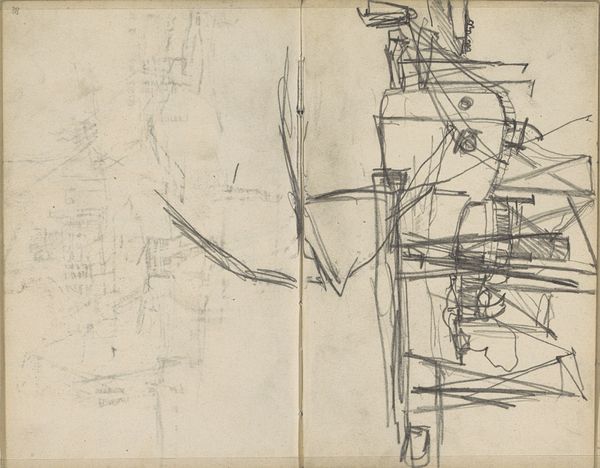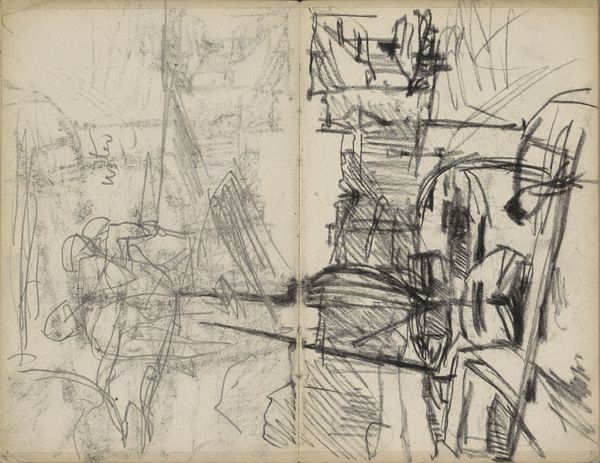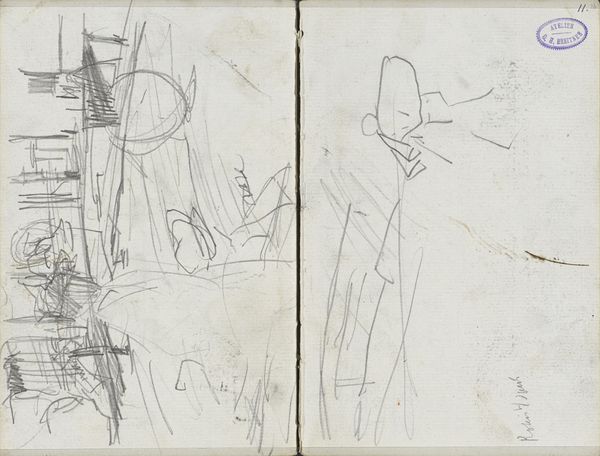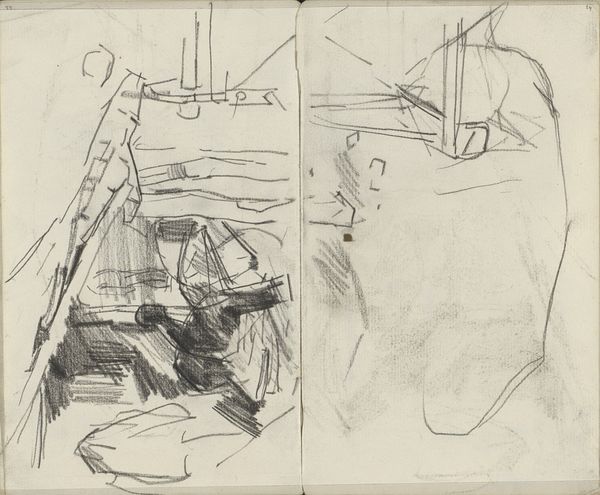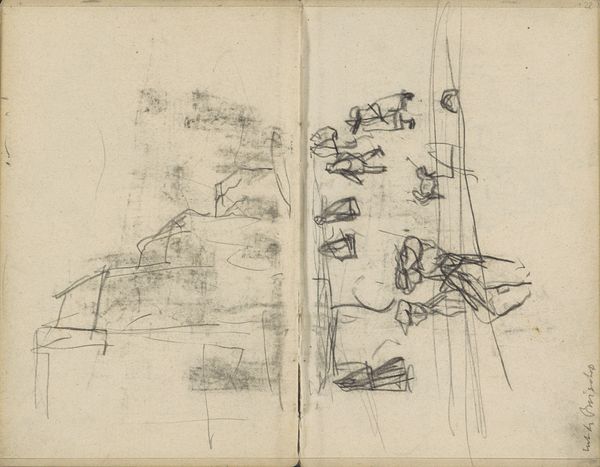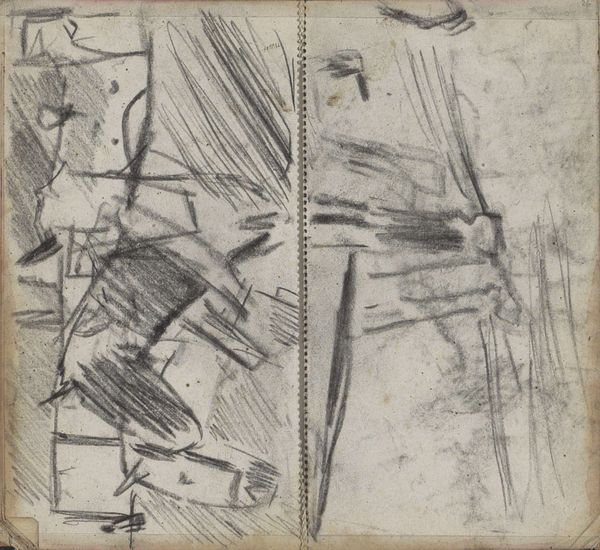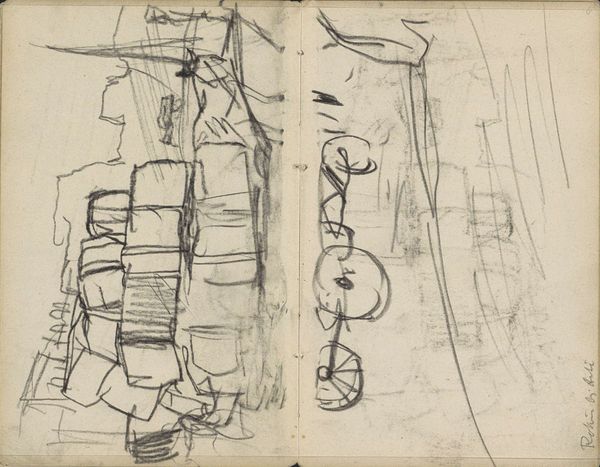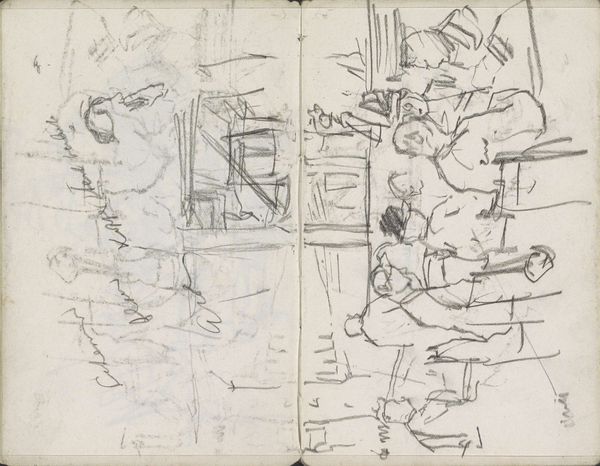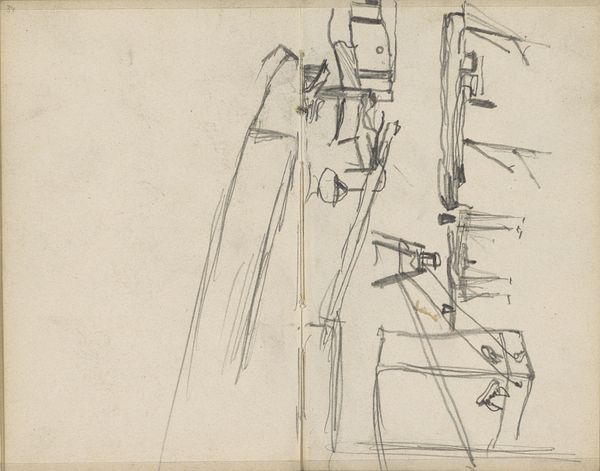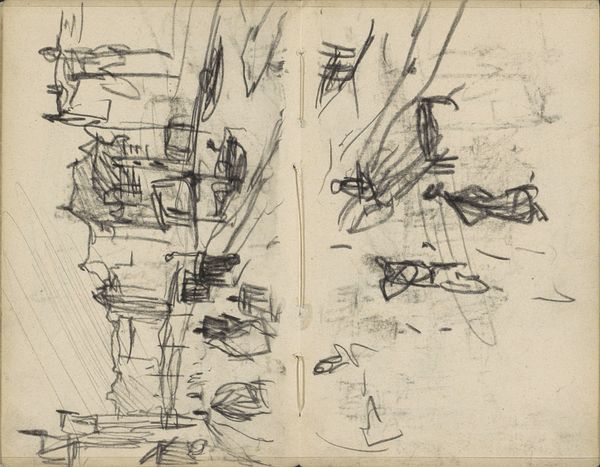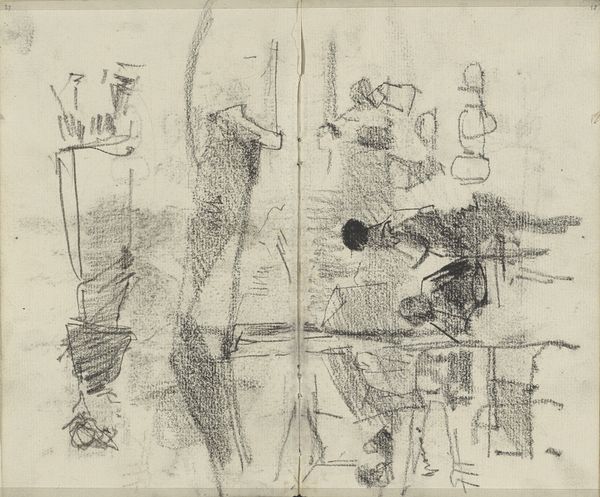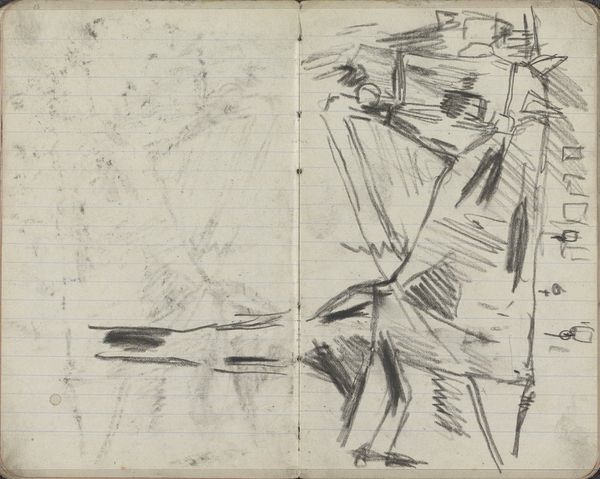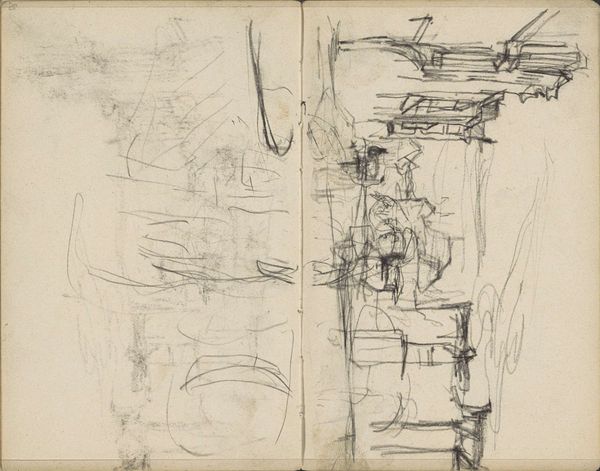
drawing, paper, pencil
#
drawing
#
quirky sketch
#
impressionism
#
sketch book
#
landscape
#
figuration
#
paper
#
personal sketchbook
#
idea generation sketch
#
child
#
sketchwork
#
pen-ink sketch
#
pencil
#
sketchbook drawing
#
storyboard and sketchbook work
#
sketchbook art
#
initial sketch
Copyright: Rijks Museum: Open Domain
Curator: Well, here's something a bit different! We’re looking at “Figuurstudies,” or “Figure Studies,” a drawing by George Hendrik Breitner, made sometime between 1880 and 1882. It’s currently residing here at the Rijksmuseum. Editor: My first thought? Intriguing chaos! A burst of lines, a kind of beautiful mess… It feels spontaneous, like a captured thought. Curator: Exactly! Breitner's all about that snapshot feeling, the immediacy of a moment. Notice how the composition is split across two pages, suggesting a sketchbook. We get glimpses of figures, possibly at work or play, within an almost abstracted setting. Look closely, and you can begin to distinguish architectural shapes and figures interacting in a boat! Editor: The texture, too—that rough, unfinished quality. It's less about perfect representation and more about the energy, the suggestion of form. It invites the viewer to piece it together, to participate in the act of seeing. How do these qualities represent an "impressionist" approach? Curator: Well, this really reflects the influence of Impressionism by embracing that unfinished quality and using quick strokes and suggestive imagery over precision to reflect immediate, fleeting impressions. Breitner has applied similar visual thinking to landscape. You could argue, with this sketch, that Breitner has turned the page against the formal and Academic conventions of the time! Editor: It really has that ‘backstage pass’ vibe to creative idea generation. It feels intensely personal, an artist wrestling with ideas, letting them flow unfiltered. There’s vulnerability in showing work this raw. I find it so much more captivating than some perfectly rendered piece because the image documents process. Curator: I couldn’t agree more. It’s the artistic process laid bare. This drawing isn’t striving for polish. It's an authentic expression of how Breitner perceived and interacted with the world around him. Editor: It makes me wonder about the stories behind those sketches. The lives observed. I like the idea that these could be people he passed by daily on the canals. What stories were their lives and their work lives at the docks? What can we see if we are truly aware? Curator: Absolutely. “Figuurstudies” encourages us to appreciate the beauty in the incomplete, the value in the preliminary.
Comments
No comments
Be the first to comment and join the conversation on the ultimate creative platform.
